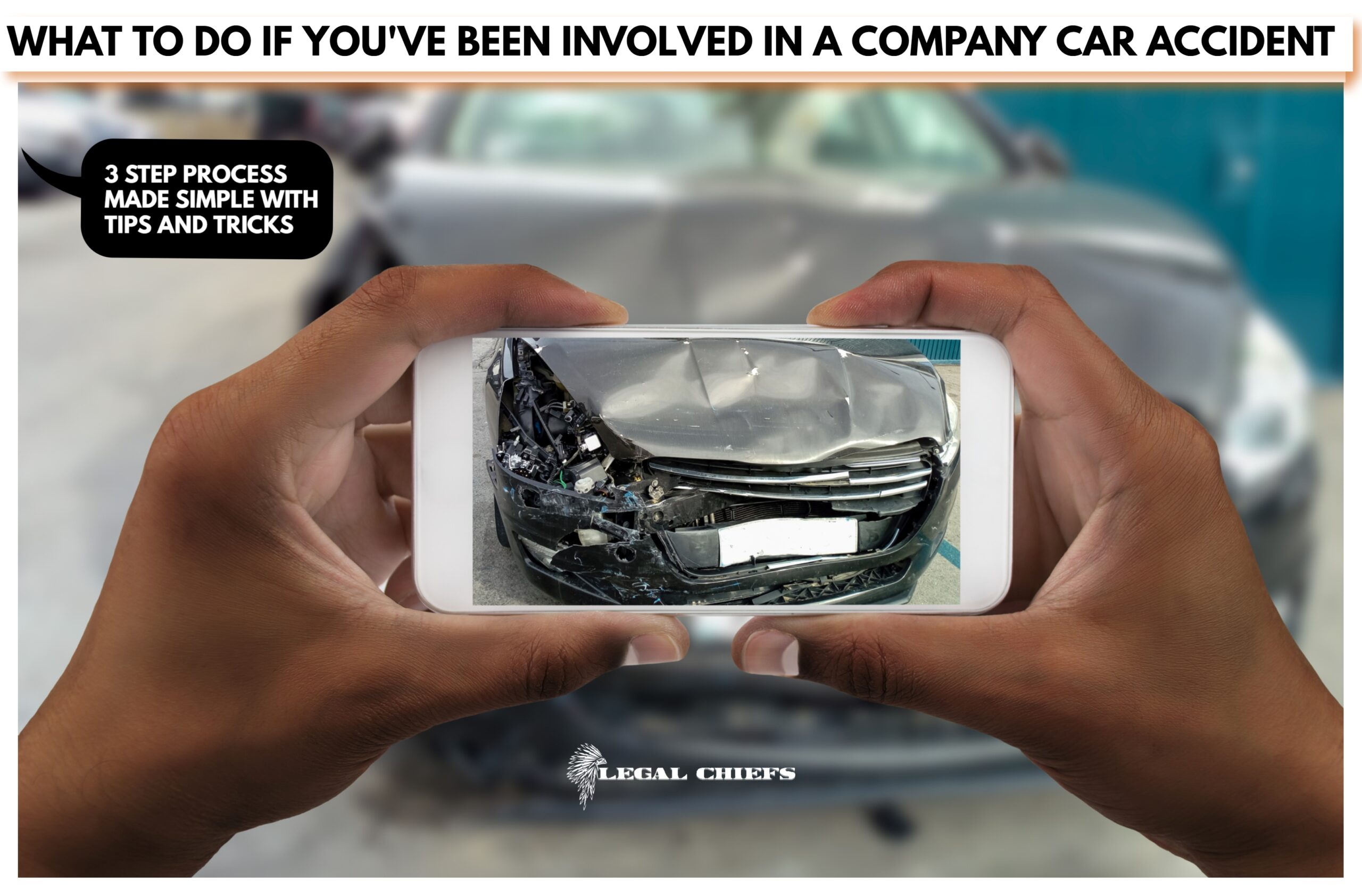I Crashed My Work Vehicle, What Should I Do Next?
Company vehicles provided by employers are usually purchased with commercial auto insurance. In case you’re involved in an accident with a work car, the commercial auto insurance will pay any valid claims related to the accident, as long as you (the employee) were using the vehicle properly at the time of the accident.
However, if you as an employee, are responsible in terms of liability, you may be required to pay the company back.
Simply Follow This 3 Step Process
Step #1- Deciding Who Is to Blame for the accident
Determining fault is crucial and usually the first step in deciding who is financially responsible. Employers are usually responsible for the actions of their employees, as long as an employee is acting within the scope of employment.
Step #2- Determining Who Pays
It’s always the driver at fault or their insurance company. If you are at fault, your employer’s insurance company will pay for the damage. However, you may have to pay them back if you are were not in the scope of your duties when the crash happened.
Step #3- Considering State & Local Law
Another factor that may complicate your case is the fact that laws vary by state or jurisdiction. This is why it’s important to know what kind of coverage your employer has if you are using a company vehicle out of state but you should also get familiar with your local state laws.
Auto Accident FAQ
Your first and foremost action following an accident is to stay calm, check if you or anyone else involved has been injured, and call the police. Get the name and contact information of all parties involved in the accident as well as any witnesses of the event. To document the damage, take pictures of the accident scene, the vehicles, and your injuries. It’s important not to admit liability until you hire an attorney because they will conduct a thorough investigation to establish the driver at fault.
Right after a car accident, you may feel fine, but injuries can surface days, weeks, and even months later. That’s why it’s good to see a doctor even if you don’t believe you were injured in the accident. Your doctor can recognize issues or injuries that won’t immediately become apparent to you and alert you to warning signs of injuries that may arise due to the accident. If you fail to treat your injuries within a certain period of time, you may forfeit your right to get reimbursement for future medical costs. The general rule is not to settle auto accident claims without having been examined by a medical professional.
In most cases, you won’t have to go to court. The majority of auto accident claims are resolved outside of court after negotiating the terms with the insurer. Most insurance companies generally try to settle claims as quickly as possible and for as little money as possible, so it’s wise to have an attorney negotiate on your behalf.
In addition to taking pictures of the accident scene and taking the contact information of the involved parties and witnesses, your detailed explanation of how the accident happened is also necessary to file a claim. Law enforcement reports of the accident will also serve as crucial evidence in your claim.
Many factors determine the driver at fault in an auto accident case. Do not accept any part of the blame until the investigation has concluded. Even if the investigation finds that you are partially at fault, you may still be entitled to receive compensation.
There are cases when the victim also shares part of the blame for an accident. If, for example, you were driving five to ten mph over the speed limit when the accident happened, this would have limited your reaction time, and you could likely be considered a negligent driver even if you weren’t the one to cause the crash. Different states have different ways of settling auto accident claims where more than one driver is at fault. So it’s best to check the specific laws in your state (or the state where the accident took place) or discuss the matter with your auto accident injury lawyer.
It happens surprisingly often that people get into an auto accident where the driver at fault doesn’t have insurance. In these situations, it’s wise to have an auto insurance policy that comes with Uninsured Motorist (UM) coverage. That way, if you get into an accident and the at-fault driver doesn’t have insurance, you will still be able to file your claim under the UM coverage you have with your own insurance company. Your insurer will then process the claim following the same process as it would for an opposing insurer. The only difference is that the claim will be against your UM coverage and not against another driver.
Likewise, if you were involved in a hit-and-run accident where the responsible driver fled the scene before you could take their information, you can again seek compensation from your UM coverage.
Suppose you suffered injuries after an auto accident that was caused by another driver’s negligence. In that case, there are two main types of damages that you may seek compensation for: compensatory (a.k.a. monetary) and punitive damages.
Compensatory damages are the most common type of damages in a personal injury claim, and they often include:
● Current and future medical bills
● Property damage
● Emotional duress
● Lost wages
● Loss of enjoyment of life
● Loss of future earnings potential
On the other hand, punitive damages are much rarer, but they can occur in situations where the vehicle manufacturer is to blame.

